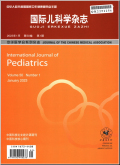摘要炎症是临床上常见而又重要的基本病理过程.过度的炎症反应对组织器官有着巨大的损伤作用.一氧化碳是一种小分子气体,在体内主要由血红素氧合酶降解血红素而生成,它的多种生物学活性均与其细胞保护功能有关,如抗炎、抗凋亡、抗增殖及舒张血管.基础研究发现:在多种炎症模型中,一氧化碳均具有良好的抗炎效应,其作用的主要细胞细胞信号通路包括丝裂原活化蛋白激酶信号通路、Toll样受体信号通路、核转录因子-κB信号通路、Janus激酶-信号传导和转录激活子信号通路等.临床研究中,一氧化碳并未取得良好的保护效果.该文探讨一氧化碳的抗炎作用机制,以期为更进一步研究提供理论参考.
更多相关知识
abstractsInflammation is a common and important clinical basic pathological process, and excessive inflammatory response has tremendous damage to tissues and organs.Carbon monoxide is a kind of small-molecular gas, which is generated by degradation of heme in the body.It has been demonstrated that endogenous carbon monoxide has a variety of biological activities involved in its cytoprotective efects, such as anti-inflammation, anti-apoptosis, anti-proliferation and vasodilation.Carbon monoxide has good anti-inflammatory effect in a variety of inflammatory models in basic research, which play roles in following main cell signal pathways include mitogen-activated potein kinase (MAPK) signal pathway, toll-like receptor (TLR) signal pathway, nuclear factor κappaB (NF-κB) signal pathway ,janus kinase-signal transducer and activator of transcription(JAK-STAT) signal pathway.Unfortunately, carbon monoxide did not show good protective effect in clinical research.This review summarizes the anti-inflammatory mechanism of carbon monoxide, so as to provide theoretical reference for further study.
More相关知识
- 浏览273
- 被引1
- 下载72


相似文献
- 中文期刊
- 外文期刊
- 学位论文
- 会议论文



 换一批
换一批 换一批
换一批



